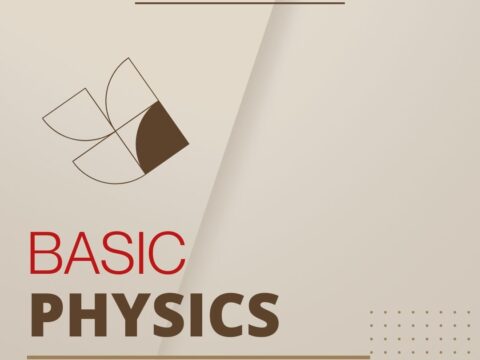The psychology of motivation: Strategies for engaging students
Motivation plays a role not only in people’s choice to get involved in their goals but also in their behavior, persistence, and, ultimately, success. It is imperative for educators to be aware of the essence of motivation in education in order to create a stimulating environment where students can learn and develop. Through understanding motivation, educators will discover various sophisticated techniques to attract attention and instill a love for learning among students for life.
What does motivation entail?
Motivation is a phenomenon built on the idea of the action of inside and outside factors that together influence an individual to act in the achievement of his/her aims. Experts in psychology have comprehensively analyzed motivation. As a result, they have presented different theories and components which shape the way humans behave. A learner can be driven by two major types of motivation, the extrinsic and intrinsic types, each with its unique characteristics and ramifications on the learning process.
1. Intrinsic Motivation
Intrinsic motivation represents a desire to participate in an activity for its very essence, which is ignited by internal rewards such as curiosity, interest, and satisfaction resulting from the achieved mastery. For instance, experts from a coursework writing service are often driven by an internal passion to do their job well and to deliver excellent academic papers to maintain the company’s high reputation. Intrinsically motivated students differ from extrinsically motivated students in that they have real interest and passion for learning, which may result in deeper engagement and better academic performance.
Strategies that make sure students are intrinsically motivated
Educators should cultivate autonomy. Allowing students to make their own choices and to be in charge of what they learn creates an atmosphere of independence and engagement. By giving students opportunities to choose assignments, projects, and learning pathways that resonate with what they are interested in or are passionate about, they are sustained with the motivation to learn.
Educators should nurture curiosity. Curiosity is the trigger for intrinsic motivation, which pushes students to wonder, ask questions, and of course, discover new things. Teachers can create curiosity in students by posing interesting questions, involving students in real-life problems, and letting them experiment with the subject on their own. Teaching can be very successful when teachers use the student’s intrinsic curiosity to empower them and create a learning passion.
Teachers must give constructive feedback. Feedback impacts the development of intrinsic motivation through the revelation of the efforts applied, progress made, and the possibilities of further improved performance. Comprehensive feedback that takes into account effort, the level of progress, and the development of skills enables students to develop a growth mindset, which, in turn, fuels their efforts.
2. Extrinsic motivation
Extrinsic motivation is about doing things to get external rewards, such as praise and awards, or in fear of punishment. While different extrinsic motivation factors work for different people and under different circumstances, they might be used and misapplied incorrectly, which may sometimes undermine the person’s intrinsic motivation.
The approaches of capitalizing extrinsic motivation
Educators need to inculcate the habit of goal setting in students. By setting the right goals that could address meaning and purpose for the student, he or she will be able to direct efforts in this direction and be motivated to achieve more. Translate larger targets into micro goals and then, explain consistently what is meant in order to make them clear and to create alignment.
Educators should employ an incentive system in a logical manner. Not to mention extrinsic rewards like praise, recognition, and tangible incentives, can also work out as efficient motivators when they are employed wisely. Utilize both intrinsic and extrinsic motivation to encourage desirable behavior by giving students positive feedback for their devotion and accomplishments.
Educators should create a caring and healthy atmosphere. Establishing a classroom culture that cultivates the positive values of the need to try, be strong, and work as a team is the key to encouraging motivation. Empower peer support, cheer for achievements jointly, and create an atmosphere in which one feels safe and supported to try and learn from everything.
Mixing intrinsic and extrinsic motivation
Efficient motivation techniques usually create a blend of intrinsic and extrinsic motives while considering the different needs (and choices) of learners. When creating a learning space that stimulates students’ motivation through the recognition of their own values, teachers can combine external incentives in a very careful way, which creates a classroom where students are willing to learn new things, explore new ideas and work harder to reach their full potential.
Effective motivation strategies can successfully change students’ engagement
The psychology of motivation is a worthwhile resource for investigating the intricacies that shape student activity and performance. Through the medium of embedding strategies that sustain the interest and wider involvement of students in their learning experiences, teachers can develop a vitalizing culture wherein curiosity, self-belief, and quest for learning become lifelong habits. Through the utilization of inspiration, teachers are able to realize all the potential within each student and in doing so, they also set a standard of academic achievement and personal development.
–Photo by Priscilla Du Preez from Unsplash
Here’s the sign-up link if the image above doesn’t work:
https://forms.aweber.com/form/07/1910174607.htm
“The content presented in this blog are the result of creative imagination and not intended for use, reproduction, or incorporation into any artificial intelligence training or machine learning systems without prior written consent from the author.”
Jacqui Murray has been teaching K-18 technology for 30 years. She is the editor/author of over a hundred tech ed resources including a K-12 technology curriculum, K-8 keyboard curriculum, K-8 Digital Citizenship curriculum. She is an adjunct professor in tech ed, Master Teacher, webmaster for four blogs, CSTA presentation reviewer, freelance journalist on tech ed topics, contributor to NEA Today, and author of the tech thrillers, To Hunt a Sub and Twenty-four Days. You can find her resources at Structured Learning.







































I know when an instructor is enthusiastic about the material that feeling can translate to one’s students. I had a history teacher in college who loved the subject and it made me all the more interested in the topics.
I had that with economics. It comes alive with their hand, doesn’t it.